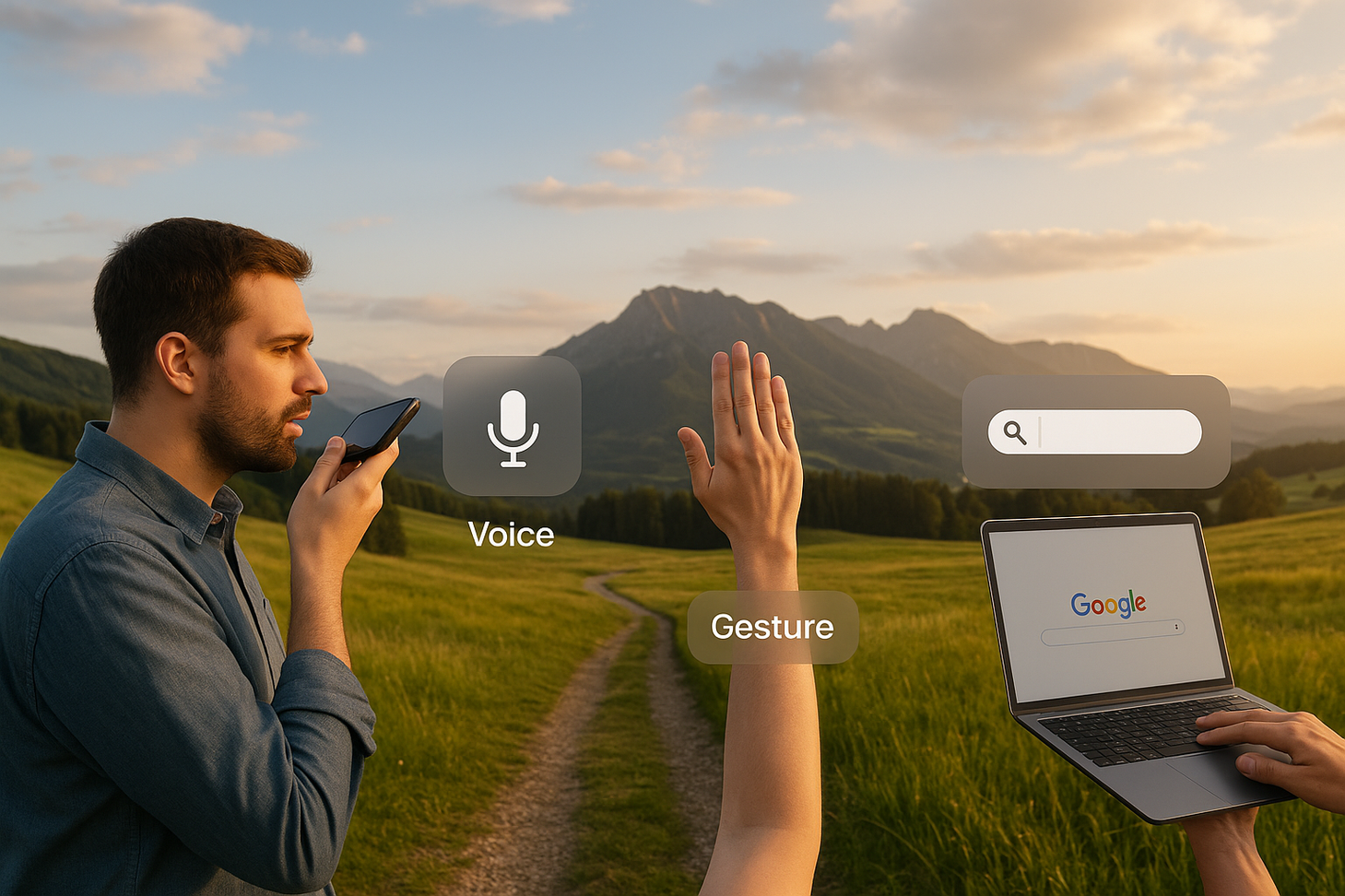Every time you scroll, swipe, or double-tap on TikTok or Instagram Reels, you’re participating in something far more calculated than it seems. These platforms aren’t just random hubs of entertainment; they are carefully crafted psychological environments. Behind the colourful videos and viral dances lies a powerful system that actively reshapes neural pathways, using a tactic known as subconscious priming.
With a staggering combined audience of over three billion users worldwide, TikTok and Reels have fine-tuned their algorithms to exploit the most vulnerable aspects of human psychology. What might feel like harmless fun is, in fact, a carefully designed experience aimed at creating behavioural addiction, a pattern where users feel compelled to return, often without even realising why. In this deep dive, we’ll uncover the hidden triggers that steer your attention, explore how these short-form platforms condition your mind, and why escaping their grip requires more than just good intentions or discipline.
Understanding Psychological Priming in the Digital Playground
What Is Priming, Really?
Priming is a fascinating psychological phenomenon in which exposure to one stimulus subtly influences how you respond to the next. It happens quietly, without any conscious awareness. In the real world, priming can make you crave coffee after seeing a cosy café or smile when you hear a song tied to a happy memory.
In digital spaces like TikTok and Reels, priming has become a potent tool for influencing user behaviour. With each scroll, these platforms are planting seeds through visuals, sounds, and interactions that gently steer what you think, feel, and ultimately do next. Without ever shouting for your attention, these cues mould your habits, keeping you engaged far longer than you might intend. The longer you stay, the more the platform wins and the more you lose track of time and, sometimes, even yourself.
Types of Priming Used by Social Media Giants
Social media priming isn’t a one-size-fits-all trick. It is a layered strategy involving different types of subtle nudges, each playing its part to keep you hooked:
- Direct Attribute Priming: This is when platforms spotlight specific features, like a trending dance, a viral sound clip, or a hashtag challenge. By nudging you toward these highlighted trends, they guide your focus and encourage participation, often before you consciously realise it.
- Indirect Priming: Sometimes it is not the content itself but the atmosphere that hooks you. Background music that matches your mood, a certain colour palette that feels comforting, or even the smoothness of the app’s interface, all these “environmental” touches silently coax you into lingering longer.
- Conceptual Priming: Have you ever noticed how, after watching a few cooking videos, your entire feed feels like a food festival? That’s conceptual priming at work. Once your brain is tuned into a particular idea, similar content feels naturally appealing, keeping you trapped in a loop of related videos.
- Brand Priming: Brands use familiar logos, jingles, or aesthetics to trigger emotional responses. On TikTok and Reels, partnerships and branded content aren’t just about advertising; they’re primed to make you associate certain feelings, lifestyles, or aspirations with specific products, often without realising you’re being marketed to.
These techniques rarely work alone. Instead, they weave together into a seamless tapestry of influence, engineered to feel “organic” while subtly pulling you deeper into the platform’s grasp.
Understanding these invisible forces is the first step toward regaining control. Because once you see the strings being pulled, you can start learning how not to dance to someone else’s tune.
TikTok’s Algorithmic Design: Addiction Isn’t an Accident
When it comes to TikTok, the addictive nature of the platform isn’t just a happy accident; it is by design. Hidden behind the fun, fast-paced videos is a powerful, deliberate system engineered to keep users engaged for as long as possible. Recently, TikTok cracked open the black box a little, revealing the inner workings of its point-based engagement system. And once you see how it functions, it is hard to unsee the clever manipulation at play.
The Exposed 5-Point Engagement System: Every Action Counts
At the core of TikTok’s recommendation engine is a surprisingly simple but brutally effective scoring model. Here’s how it breaks down:
- Likes = 1 point
- Comments = 2 points
- Shares = 3 points
- Complete Views = 4 points
- Rewatches = 5 points
This weighted system reveals TikTok’s true priorities: it is not just about how many people see a video, but it is about how deeply the content resonates. If someone re-watches your video (the highest scoring action at 5 points), it signals a strong emotional pull or genuine value. Similarly, if viewers share your video (3 points), it means the content is impactful enough to pass along.
This isn’t random; it is strategic. By prioritising emotional engagement over shallow interactions, TikTok ensures that only the most engaging, addictive content rises to the top. In short, the platform is systematically rewarding whatever taps into your subconscious the most effectively, whether it is joy, shock, nostalgia, or curiosity.
The Critical 300-View Test: Survival of the Stickiest
When a creator uploads a fresh video, TikTok doesn’t immediately show it to millions. Instead, it quietly sends the content to a sample group—roughly 300 users chosen at random. This phase acts like a miniature “focus group” where the content must prove itself.
Here’s the catch: to earn broader exposure, the video must collect at least 50 points from this small audience. If it doesn’t hit the mark, the content is quietly buried, never reaching the wider TikTok community.
This creates a hyper-competitive environment where only the most engaging videos survive. Creators are thus incentivised (often unconsciously) to craft content that sparks strong reactions—fast. Subtlety, slow builds, or complex storytelling? They usually get filtered out. Only punchy, emotionally charged, and rewatchable content wins.
How Users and Creators Are Primed into a Feedback Loop
This isn’t just about how the platform picks winners—it is about how it trains its entire ecosystem.
Creators quickly learn what types of videos perform well: fast cuts, exaggerated emotions, recognisable trends, and cliffhanger endings. Even if they don’t consciously understand the point system, they adapt their content to align with what gets rewarded.
Meanwhile, users become subtly trained too. They begin to expect a certain rhythm and emotional payoff from the content they consume. Anything slower, more thoughtful, or requiring effort to process feels “off” and gets skipped.
Over time, both creators and consumers fall into a perfectly synchronised dance—a self-reinforcing loop in which the platform’s engagement needs shape behaviour on both sides. The more seamless this system feels, the less users realise how deeply their instincts are being manipulated.
The Collective Unconscious: How Jung’s Theory Lives on Through Social Media
Long before smartphones and endless scrolling took over our lives, Swiss psychiatrist Carl Jung introduced a profound idea: beneath our individual thoughts and memories, there exists a collective unconscious, a deep, shared layer of the human psyche filled with timeless symbols and patterns known as archetypes. These universal images—the brave hero, the wise elder, and the mischievous trickster—appear across cultures in myths, religions, art, and stories, regardless of time or place. They are, essentially, part of what makes us human.
Fast forward to today, and without even realising it, platforms like TikTok and Reels are tapping directly into this ancient psychological inheritance.
How TikTok Subtly Taps Into Ancient Archetypes
At first glance, TikTok trends might seem chaotic or even nonsensical. But if you look closely, many viral challenges and memes are not as random as they appear.
In fact, they often resonate because they awaken deep, universal archetypes embedded in all of us.
Take the “Silhouette Challenge,” for example, users posed in shadowy, alluring lighting set to moody music. On the surface, it is just a cool aesthetic. But psychologically, it connects to the “Veiled Goddess” archetype, a symbol of mystery, power, and allure found across global mythology, from ancient Egypt to classical Greece.
When a trend aligns with these universal templates, it feels instantly magnetic. You don’t need to “understand” it consciously; your subconscious already recognises it. This hidden layer of meaning creates a powerful sense of familiarity, belonging, and emotional pull that keeps users watching, participating, and sharing.
The Power of Sound: More Than Just Background Noise
Another subtle but powerful tool TikTok uses to engage the subconscious is sound. The platform’s short, looping audio clips aren’t just catchy; they’re neurological priming tools.
Throughout history, humans have used repetitive sound, think drum circles, ritual chants, and communal singing, to alter states of consciousness, build group identity, and trigger trance-like focus. TikTok mirrors this tradition in a modern form.
A perfect example is the explosion of sea shanties in 2021. These rhythmic, communal songs caught fire on TikTok not just because they were catchy, but because they tapped into deep human instincts around rhythm, work songs, and social bonding.
When your brain locks onto a repetitive beat or melody, it activates areas linked to movement, emotion, and community, essentially priming you to stay engaged, feel connected, and crave more. Even when you’re alone, the experience of scrolling through similar sounds makes it feel like you’re part of something bigger, something timeless.
In short, TikTok isn’t just entertaining you; it is reaching deep into your ancient wiring, pulling you in with symbols and sounds that have captivated human beings for thousands of years.
The Dopamine Factor: How Short-Form Content Hooks Your Brain
There’s a reason you can lose hours mindlessly scrolling through TikTok and Instagram Reels, and it is not just because the videos are entertaining. Behind the endless stream of dances, jokes, and life hacks is a powerful neurological force at work: dopamine.
Dopamine is the brain’s feel-good chemical, a neurotransmitter deeply tied to pleasure, motivation, and reward. It is what makes you feel a tiny jolt of happiness when you accomplish a task or when you see a flood of likes on your latest post.
But social media platforms have taken this natural biological process and supercharged it, creating digital environments that constantly overstimulate your reward system.
Dr. Anna Lembke, a psychiatry professor at Stanford University, puts it simply:
“Our brains are not designed to be bombarded with endless sources of instant gratification. Social media taps into the very same reward pathways that are activated by addictive substances.”
In other words, TikTok and Reels are not just time-wasters. They are neurologically engineered dopamine machines.
Perfect Timing: How Short-Form Videos Deliver Constant Highs
One of the reasons TikTok and Reels are so potent is the speed at which they deliver rewards.
Each video typically lasts between 15 and 60 seconds, short enough to keep your attention, but long enough to trigger a reaction. And the moment one video ends, another begins immediately.
This rapid-fire structure means your brain barely has time to “come down” before the next potential dopamine hit arrives.
Unlike movies or even traditional YouTube videos, which require sustained attention and emotional investment, short-form content offers bite-sized dopamine bursts, perfectly calibrated to keep you hooked.
The faster the rewards come, the harder it becomes for your brain to resist staying on the platform. What starts as “just a five-minute break” easily spirals into an hour-long binge without you even realising it.
The Validation Loop: Addiction Through Social Approval
But the trap isn’t just in the content you consume; it is also in the validation you crave.
Every time you post a video, you’re playing a high-stakes game for likes, comments, shares, and follows. Even before the first like rolls in, your brain is already anticipating it, releasing small amounts of dopamine in expectation.
If the validation comes, you feel rewarded. If it doesn’t, you’re left anxious, disappointed, and craving another chance.
This cycle, anticipation, reward, anxiety, repeat, is strikingly similar to the psychological mechanisms behind gambling addiction.
And the consequences aren’t trivial. Studies show that individuals who spend more than three hours per day on social media platforms are twice as likely to experience depression and anxiety compared to those with more moderate use.
In essence, the very system built to keep you entertained is also quietly wearing down your emotional resilience.
Specific Priming Techniques Employed by TikTok and Reels
If you’ve ever wondered why it is so hard to close TikTok or stop watching Reels after “just one more scroll,” it is not a coincidence. Both platforms masterfully deploy priming techniques at every level—design, content, and psychological strategy—to keep you glued to your screen. Here’s how they pull it off:
Interface Design as a Priming Tool
The very layout of TikTok and Reels is engineered to prime your brain for endless engagement, subtly encouraging social media addiction without you even realising it.
Frictionless Scrolling
Minimal effort is required to see the next piece of content. A single thumb movement unlocks a new dopamine hit, priming your brain to keep scrolling without pausing for conscious thought.
Full-Screen Immersion
Each video occupies your entire screen, eliminating distractions. There are no sidebars, no clutter, just you and the content. This design primes complete focus and amplifies emotional responses.
Gesture-Based Navigation
Swiping becomes second nature. The simple, intuitive motion trains your body into automatic behaviour, making scrolling a reflex instead of a decision.
Infinite Content Stream
Perhaps the most dangerous element—there’s no natural stopping point. Unlike a book or a movie with a clear end, TikTok and Reels offer an endless stream. Without a finish line, your brain lacks the usual cues to stop, a critical feature that fuels social media addiction.
Content Selection: Priming Your Preferences
It is not just the design; the TikTok algorithm and Reels algorithm are brilliant at serving content that primes further engagement based on psychological patterns.
Preference Mirroring
The platforms quickly learn what type of content you like, then flood you with similar videos. This reinforcement loop keeps you inside your “interest bubble,” deepening emotional investment.
Gradual Interest Expansion
Subtle shifts happen over time. After solidifying your main interests, the algorithms start introducing adjacent topics—nudging you into new categories and keeping the experience fresh and stimulating.
Novelty Balancing
Total repetition would bore users, but pure randomness would confuse them. The algorithms sneak in surprising or slightly novel content at strategic intervals to spike curiosity and prevent fatigue.
Emotional Variation
Happy videos, inspiring clips, sad stories—the emotional rollercoaster isn’t random. It is a deliberate strategy to maintain a dynamic emotional state, priming you to crave more content and avoid emotional burnout.
Psychological Investment: Locking You In
Beyond scrolling and content, TikTok and Reels use psychological priming to make you feel personally invested, transforming casual usage into habitual dependence.
Parasocial Relationships with Creators
You feel like you “know” your favourite creators even though the connection is one-way. This illusion of relationship primes users to check back constantly for updates, feeding into social media addiction cycles.
Trending Participation
Challenges, hashtags, dances—joining in feels fun, but also creates a psychological stake. Once you participate, you’re more likely to stick around to see how others react.
Fear of Missing Out (FOMO)
Time-sensitive trends and viral moments are highlighted aggressively, priming you to check the apps more frequently out of fear you’ll miss something “important.”
Identity Reinforcement
The algorithms also show content that echoes your beliefs, style, and self-concept. This isn’t accidental; it primes users to feel validated and “seen,” making the platform feel like a digital home rather than just an app.
Through a combination of carefully designed interfaces, laser-targeted content delivery, and deep psychological hooks, TikTok and Reels have become not just sources of entertainment but sophisticated engines driving social media addiction.
The more you engage, the more primed you become, and the harder it gets to pull away.
Mental Health Implications: The Dark Side of Psychological Priming
We all love a good scroll. TikTok, Reels, and Shorts; they make us laugh, learn, and lose track of time. But have you ever closed the app and felt weird? Drained? Like your brain’s been through a spin cycle?
That’s not a coincidence. The way these platforms are built—fast videos, endless content, likes and comments hitting just right—is all carefully designed to mess with how our minds work. Over time, it can seriously affect our mental health.
What the Science Is Saying (And Why It Matters)
Research shows that heavy use of short-form video apps is linked to:
- Feeling more anxious or low without even knowing why
- Struggling to focus on anything longer than 10 seconds
- Poor sleep, because your brain’s still buzzing even after you log off
- Comparing yourself to perfect-looking people and feeling like you’re not enough.
We don’t realise it while we are mid-scroll, but our brain is constantly reacting and not always in healthy ways.
It is Not Just About You; It Affects Relationships Too
Ever sat in a room with people you care about, but everyone’s glued to their phones?
- We are physically together but mentally somewhere else.
- Conversations get shorter. We expect instant replies.
- Real life starts to feel underwhelming.
- Our brains get used to hyper-fast, emotionally charged content all day long.
Signs it is Becoming Too Much
Let’s be real; we all use social media more than we’d like. But when it crosses into unhealthy territory, there are some clear signs:
- You keep saying, “Just five more minutes,” but it is never five
- You feel irritated when you can’t check your feed
- You need more and more time online just to feel okay
- You use it to escape bad moods, then feel worse after
- You know it is messing with your head… but you keep going back
Reclaiming Agency: Countering Subconscious Priming
The good news? You don’t have to delete everything and go live in the mountains. Regaining control can be small, doable stuff.
First: Notice What’s Happening
Pay attention to what certain content makes you feel. Do you feel relaxed? Inspired? Or insecure and on edge? Start there.
Then: Set Tiny Boundaries
- Use app timers
- Leave your phone outside the bedroom
- Unfollow accounts that stress you out
- Hit “not interested” more often; it actually helps
- Take mini detoxes: one day off per week, or an offline hour every evening
- These little shifts matter more than you think.
- Get Curious, Not Judgy
Ask yourself: Why am I seeing this? Who benefits if I keep watching?
That’s not paranoia. That’s media literacy, and it is the digital superpower we all need now. You Get to Decide How You Scroll
Here’s the truth: short-form platforms aren’t evil. They’re brilliant, fun, sometimes even healing. But they’re tools. And like any tool, they can help you build something or they can chip away at your peace of mind.
Navigating the Future of Short-Form Content
TikTok, Reels, and similar platforms aren’t going anywhere, and neither are the psychological tools they use to keep us hooked. But those tools aren’t evil by nature. They’re just powerful. How we interact with them is what makes the difference.
The trick is staying aware. Once we understand how these platforms prime our minds, we can start making choices that feel intentional instead of automatic. We don’t have to quit them; we just need to use them without letting them use us.
In the end, it is a personal call:
“To scroll unconsciously or to engage with presence. To be primed, or to take back the priming.”






